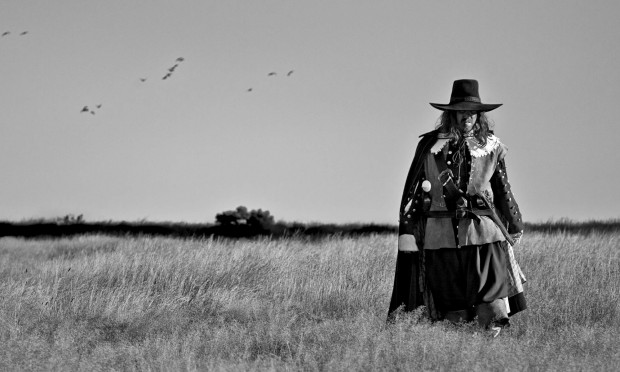The Guardian looks back on 40 years of British weekly SF comic 2000AD:
Forty years ago on 26 February, something extraordinary happened to British comics. Newsagents’ shelves were suddenly stuffed with a brand new title, its masthead garish red and yellow, with an enticing plastic “Space Spinner” taped to the front. “In orbit every Saturday,” the front proclaimed, “for a low price: 8p Earth Money.” 2000AD had landed.
It’s not, strictly, correct to say the world had seen nothing like 2000AD before. A few months earlier, in October 1976, a title put out by the same publishers, IPC, had died an ignominious death. Action was stuffed to the gills with anti-authoritarianism, ultraviolence and gore. Hugely popular with kids, especially boys, it proved too unpalatable for the nation’s moral guardians. Questions were asked in the House, tabloids fulminated against its bloody violence.
The final issue of Action was pulped before it made it to the newsagents. But its successor was already in the works, from the writer/editor who had created Action: Pat Mills.
In Action, Mills had freely taken inspiration from 1970s popular culture, riffing on Muhammad Ali, Jaws and football hooligans. The new wave of science-fiction blockbusters – Star Wars and Close Encounters of the Third Kind – gave him a brainwave.
“I felt, in a way, that science fiction could escape the heavy flak we had got with Action,” says Mills, who now lives in Spain. “With Action, the message was loud and clear because most of it was set in what was the present time. With 2000AD, we could do the same sort of thing but if anyone complained we could say, ‘Look, it’s just some robots in the future.’”
For better or worse, 2000AD was pretty formative for me growing up, although probably less for its best known character Judge Dredd, than for things like Pat Mills and Kevin O’Neill’s bonkers Nemesis the Warlock, Halo Jones and Dr. and Quinch (also bonkers) scripted by Alan Moore, and artist Simon Bisley’s (bonkers) Heavy-Metalesque run on Pat Mill’s Celtic barbarian fantasy Sláine, which were all dark, violent, complicated and, needless to say, extraordinary for a weekly ‘kids’ comic. I don’t know how many of those stories hold up now. At the time they felt subversive, even a little illicit. But then they do say the Golden Age of science fiction is 12.
I’m not quite old enough to remember Action, 2000AD‘s direct predecessor, but The Guardian also published a piece last year on its 40th anniversary:
1 CommentOne remarkable thing about Action was that it was tacitly aimed at working-class children.
“The only time we saw working-class characters they were sidekicks, like Digby in Dan Dare, or they were figures of fun,” [Pat] Mills says. “Even Alf Tupper, the Tough of the Track, was presented as this odd character who trained for his races in his pit boots and ate fish and chips as soon as he crossed the finishing line.
“Kids got what we were trying to do immediately. There was this whole culture of punk, of James Herbert books such as The Rats, of Richard Allen’s Skinhead novels … It was all edgy and different, and Action was definitely a part of that.”
Despite that, says Mills, the team putting together Action always had “a definite moral compass”. He says: “We weren’t saying, ‘Go and pick a fight on the terraces’, but we were showing that sort of thing happened, as kids already knew.”
















 Tracing History
Tracing History